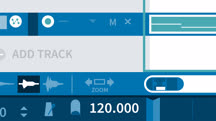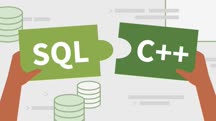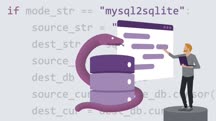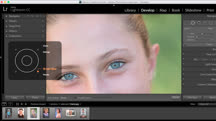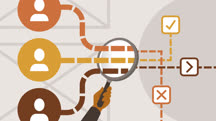Course catalog
Categories
Showing 8,281-8,300 of 8,871 items.
Using Questions to Foster Critical Thinking and Curiosity
Learn how to ask the right questions to move your team, leadership, and career to the next level.
Using Reason as a Plugin
Explore how to use Reason digital audio studio as a stand-alone application or as a plugin within another digital audio workstation (DAW).
Using Red Giant Universe for Video Editors and Mograph Designers
Learn how to use the most popular and useful plugins for video editing and motion graphics with Red Giant Universe.
Using Repeaters in Axure RP
Learn how to use Axure RP repeater widgets to prototype more complex, data-driven websites and applications.
Using Resilience to Overcome the (Seemingly) Impossible (213942)
Life is full of many obstacles and challenges, and we all have times when we must rise to the occasion. Is this a skill you can learn? The answer is a resounding yes. In this course, resilience expert Azim Khamisa shows you how to develop resilience and thrive through life's challenges. Rooted in the inspiring story of his own personal transformation, he walks you through how to forgive, reframe your hardships, and change your behaviors. Azim also explains how to live authentically, stay present in the moment, and thrive in a new environment. After watching this course, you'll feel empowered to navigate your own resiliency journey equipped with the tools and techniques needed to build it.
This course was created by Madecraft. We are pleased to host this training in our library.

This course was created by Madecraft. We are pleased to host this training in our library.

Using SABSA to Architect Cloud Security (220657)
The security required for cloud deployments is quite different from the security applied to on-site infrastructure. In order to ensure the most effective cloud security, cloud deployments should be properly architected. In this course, instructor Malcolm Shore shows how to do this using the SABSA enterprise security architecture. Malcolm goes over strategy, planning, and the ongoing architectural management processes needed to maintain the architecture and keep it relevant. He walks you through establishing a conceptual architecture, threat modeling, and risk management, then explains how the elements of the contextual and conceptual layers work together to provide a conceptual architecture suitable for the cloud. Malcolm covers how to create the logical architecture and align security services with attributes. He concludes with a description of cloud-delivered security services and a review of what you covered in the course.
Using Sketch with Framer
Learn how to use Sketch and Framer together to create interactive app prototypes.
Using SQL with C++ (219195)
C++ is a powerful language for database applications, and it can be an excellent tool to use with SQL. In this course, instructor Bill Weinman gets you started on leveraging the power of C++ in SQL, starting with the basics, like connecting to a database, performing simple queries, and reading rows from a table. He also explains how to use prepared statements and bind variables, as well as how to build a wrapper class to streamline the SQL interface. Finally, he shows you how to build a specialized application class so you can create an application using what you learned. If you’re an experienced C++ developer looking to learn how to use C++ with SQL, this course is for you.
Using SQL with Python (219620)
Are you familiar with SQL? Do you know Python? Are you interested in understanding how these two languages work together? Then join Bill Weinman in this course as he shows the power of these two languages combined. Bill starts with some basics—connecting to a database, performing simple queries, and reading rows from a table. He covers how to use prepared statements and cursors, how to build a wrapper class to streamline the SQL interface and support multiple different database engines, and how to build a CRUD class and a full-featured web application using what you've learned. Many applications require a combination of SQL and Python, and after finishing Bill’s course, you’ll have a better understanding of why and how you can leverage the power of these two languages together.
Using Tableau to Discover Powerful Business Insights
Learn how to use Tableau to create, export, and share data visualizations that can offer you powerful business insights.
Using the Time Value of Money to Make Financial Decisions (207176)
Learn how understanding the time value of money can help you figure out loan payments, save for college and retirement, rent or buy a house, lease or purchase a car, and make long-term business decisions. Accounting professors Jim and Kay Stice explain the linked concepts of the time value of money and compound interest, show you how to calculate the time value of money in Microsoft Excel or on a calculator, and how to apply the time value of money to a variety of personal and professional financial scenarios.
Learn more about interest rates and investments in the Stices' Finance Foundations course.
Learn more about interest rates and investments in the Stices' Finance Foundations course.
Using Video to Convey Your Passion and Personality
Uncover your on-camera presence with media expert and on-camera personality Lucy Norris. Learn how to be authentic and convey your passion and personality.
Using Wacom Tablets with Lightroom Classic CC 2015
Optimize your Wacom tablet for use with Adobe Lightroom Classic CC and get more control over lighting and tonal adjustments, retouching, and compositing.
Using Wacom Tablets with Painter
Maximize the expressive capabilities of your digital painting toolset. Learn to integrate a Wacom tablet and stylus for maximum pressure sensitivity and range of motion.
Using Wacom Tablets with Photoshop
Optimize your Wacom tablet for use with Adobe Photoshop and get finer control when drawing and painting.
UX Deep Dive: Analyzing Data
Take a deep dive into best practices and methodologies for analyzing data to inform and guide your UX design projects.
UX Deep Dive: Foundational Research (223972)
When it comes to UX research, there are two major categories: evaluating what’s already been done, or exploring and defining unknown spaces. Evaluative work is great, but if you’re starting from scratch or trying to figure out who your users are, you’re going to need to turn to foundational research, which involves the exploration of users, contexts, or possibilities. This approach can help you understand what you should be building and for whom.
In this course, Amanda Stockwell guides you through the ways foundational research can help uncover new opportunities and areas for improvement, regardless of your current state. Amanda starts by describing what foundational research is and how it differs from evaluative research in UX. She then covers different forms of foundational research like ethnography, data mining, and market research. Much as you wouldn’t start building a house from the third floor, building a strong foundation to your UX research will bolster every step going forward.
In this course, Amanda Stockwell guides you through the ways foundational research can help uncover new opportunities and areas for improvement, regardless of your current state. Amanda starts by describing what foundational research is and how it differs from evaluative research in UX. She then covers different forms of foundational research like ethnography, data mining, and market research. Much as you wouldn’t start building a house from the third floor, building a strong foundation to your UX research will bolster every step going forward.
UX Deep Dive: Mapping
Take a deep dive into the project mapping types that can help inform and shape your user experience (UX) design projects.
UX Deep Dive: Remote Research (224448)
When your job as a UX researcher is entirely based on learning about people and their behaviors, how do you adjust when you can’t conduct research in person? In this course, research expert Amanda Stockwell details the keys to conducting remote UX research, from recruiting participants—and making sure they show up—to planning, preparing, running and remote sessions. Amanda covers the benefits of conducting your UX research in a virtual environment, as well as situations where a more traditional research approach would be beneficial. Having a command of remote methods in addition to in-person research practices will help you conduct your work effectively, regardless of the situation.
UX Deep Dive: Usability Testing
Take a deep dive into usability testing techniques and methodologies for user experience (UX) design projects.

